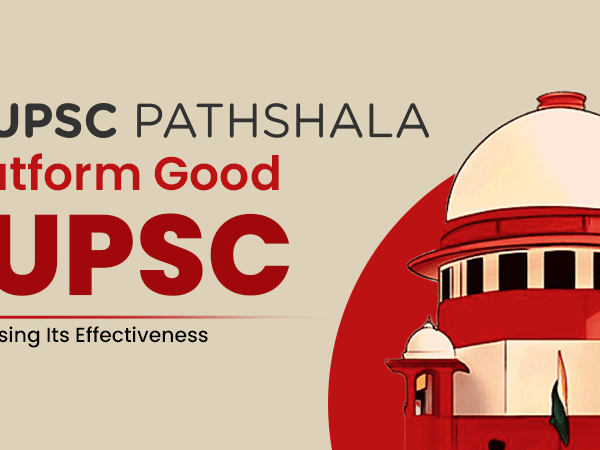The UPSC Prelims conducted on 3rd June 2018 was a mixed bag of surprises for students. Every year, aspirants go for the exam hoping to outsmart it but to no avail. This year too was no exception. After studying from various books and notes, the questions asked in the prelims were completely out of the world, not found in any books. But that is how UPSC is, they can ask anything under the sun.
Let us now have a look at the Prelims 2018 Paper. According to me, the CSAT paper was easy but the GS paper ranged from moderate to difficult. Afterall the seats offered this year are also less and consequently, the paper had to be a bit difficult to filter out the crowd.
Looking at the subject wise representation for this year’s Paper I (General Studies). The following is the breakup:
| Subject | Questions |
|---|---|
| Economics | 18 |
| Environment & Ecology | 13 |
| Geography | 10 |
| Government Schemes | 4 |
| History | 22 |
| International Relations and Reports | 10 |
| Polity | 13 |
| Science and Technology | 10 |
| Total | 100 |
The biggest loser in terms of weightage has been environment and ecology. For the past couple of years, the weightage for the environment subject had increased dramatically with the questions being of dynamic nature. However this year the section has been given only 10% weightage.
In terms of static versus dynamic questions, UPSC has seen a lot of change this year. The following bar graph gives us an idea of the weightage of static and dynamic content:
If you look carefully, you will notice that the number of static questions has increased significantly this year. Static questions need you to study books more. Current affairs which require you to read the papers regularly were given less weightage in the prelims.
Let us now have a look at the subject wise breakup of the content into static and current affairs oriented:
| Subject | Static | Current Affairs | Mix |
|---|---|---|---|
| History | 21 | 0 | 1 |
| Geography | 6 | 2 | 2 |
| Polity | 9 | 3 | 1 |
| Economics | 9 | 6 | 3 |
| Environment and Ecology | 5 | 5 | 3 |
| Science and Technology | 0 | 5 | 5 |
| International Relations and reports | 0 | 9 | 1 |
| Government Schemes | 0 | 0 | 4 |
| Total | 50 | 35 | 15 |
1. History
The questions ranged from easy to moderate where sometimes even the guesswork was easy. Some of the questions like the one on Swarajist and Mazdoor Sabha were pretty obvious. But the questions on art and culture were quite difficult and you either knew them or you didn’t.
2. Geography
The questions ranged from moderately difficult to difficult. Questions were mainly factual and hence they were difficult. For example, the man-made lake question and the longitude question were completely factual.
The questions on agriculture were majorly from current happenings. Anyone who would have read the Economic Survey 2017 thoroughly would have been able to answer it.
3. Polity
The questions in polity were of easy to moderate level. They were also very predictable with major questions connected to current happenings. The best example of this is, the question on money bill and the presidential election.
4. Economics
Questions in this section varied from moderately difficult to very difficult. The difficult ones were the questions which were related to current affairs. Example of the same is the API question.
5. Environment and Ecology
This was by far the easiest section this year. The questions asked could be solved by calculated guesses.
6. Science and technology
Questions on science and technology were majorly current affairs based. Questions were mainly on ICT( GPS, 3D Printing, iOT) and Physics (e-LISA, Gravitational waves) and Space (IRNSS) etc.
7. International Relations
The international relations section had questions which were moderately difficult to difficult. The reason for this level of difficulty was the that even though the questions were known, the options were based on intricate details. The NSG related question is the best example of the same.
8. Government schemes
The least number of questions were from this section. The questions were quite simple for someone who might have studied the India Year Book.
Strategy To Be Followed
Post analyzing this year’s question paper we need to draw a strategy for the next year. To conclude, here are some strategies that we can use
- Read more of the static syllabus for subjects like Geography and History. Since the syllabus is static it is easy to get the questions right.
- Focus more on current happenings for subjects like Environment and Economics where new concepts keep getting introduced. Usually, these concepts are asked in the exam
- In terms of polity, connect the syllabus to current happenings and focus more on it. This will give you a clear picture of what can be asked from the vast and intricate syllabus of polity.
- In current affairs, try to get a deeper detail of the events happening around you.
At UPSC Pathshala, we ensure you prepare optimally for the exam by creating a comprehensive study plan for you. This will cover the static syllabus as well as connecting it to the current happenings. That way, you will be better prepared for any kind of paper.





